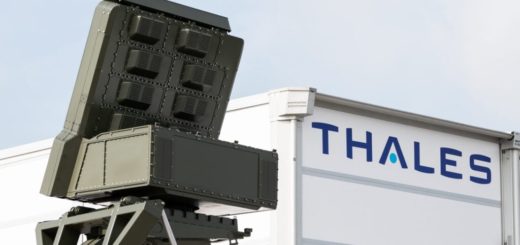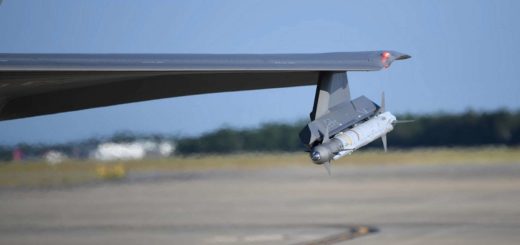U.S. and Ukraine advance drone tech deal granting Pentagon access to millions of drones
{loadposition bannertop}
{loadposition sidebarpub}
U.S. and Ukrainian negotiators are finalizing a framework giving the Pentagon access to Kyiv’s proven drone technologies in exchange for compensation and royalties. The deal could reshape defense production by integrating Ukraine’s wartime innovations into U.S. military planning and industry.
On October 3, 2025, as announced by The Wall Street Journal, U.S. and Ukrainian negotiators advanced a framework that would give the Pentagon access to Kyiv’s battle-tested unmanned systems in exchange for compensation and potential royalties. The emerging deal, backed by Presidents Donald Trump and Volodymyr Zelensky, centers on transferring designs and manufacturing know-how for low-cost attack and interceptor drones proven at scale against Russian forces. Officials are also weighing joint production on U.S. soil and measures to scrub Chinese components from Ukrainian designs to meet American security standards. The White House has cast the effort as a way to fold Ukraine’s wartime ingenuity into U.S. force planning rather than simply arming an ally at the front.Follow Army Recognition on Google News at this link
The United States is negotiating a major deal with Ukraine to acquire and co-produce its battle-proven combat drones, aiming to integrate Kyiv’s low-cost, mass-produced UAV technology into U.S. military operations and future defense manufacturing (Picture source: Ministry of Strategic Industries of Ukraine).
Kyiv is in deep talks to sell the United States “millions” of drones over multiple years, with discussions in Washington touching on a package potentially valued in the tens of billions of dollars. While neither side has released a final bill of materials, the focus spans expendable first-person-view loitering munitions, long-range strike UAVs, and dedicated counter-UAS interceptors. Ukraine’s advantage is not a single exquisite airframe but an ecosystem that marries 3D-printed structures, modular warheads, hardened digital datalinks, and rapid software iteration based on daily combat telemetry. For the Pentagon, that translates into a replenishable stock of attritable systems that can be produced at tempo and field-updated as jammers, radars, and defenses evolve.
Ukrainian FPV attack drones typically lift one to two kilograms of effects with stabilized day cameras and low-latency video links; upgraded variants integrate digital spread-spectrum radios, inertial aid for GPS-denied navigation, and pre-planned autopilot routes to survive Russian electronic-warfare bubbles. Fixed-wing strike types trade agility for range, using low-observable profiles, terrain masking, and small turbojet or electric propulsion to push beyond 500 kilometers with sub-meter satellite guidance and terminal video confirmation. Interceptor drones pair acoustic and RF sensing with high-thrust electric motors to ram or net incoming Shahed-class threats at a fraction of missile costs. What the U.S. wants is less the airframe catalog and more the production model: fast tooling changes, component commonality, and software-defined tactics that have cut Ukraine’s kill chain from days to hours.
U.S. officials have signaled that component provenance will be a gating factor. Vetting and replacing Chinese-origin chips, cameras, and RF modules with trusted substitutes is essential for any stateside assembly line and for meeting export-control thresholds should NATO partners buy into the same designs. One option under review is licensing Ukrainian intellectual property to U.S. subsidiaries to speed Department of Defense qualification while maintaining royalty streams for Kyiv. A related strand would align with Europe’s “drone wall” initiatives by enabling co-production with allies already tapping Ukrainian experience for border defense and air policing.
Swarms of low-cost FPVs can strip armor, artillery, and air defenses ahead of manned forces, while long-range UAVs hold fuel depots, command nodes, and logistics hubs at risk. Interceptor drones close a critical layer in base defense where firing a missile at a 20,000-dollar target is unsustainable. If executed, the deal gives U.S. brigade combat teams an attritable magazine for counter-battery and counter-armor fights, Marine and Navy expeditionary forces a mobile perimeter against one-way attack drones, and joint force commanders a replenishable deep-strike adjunct that complicates adversary air-defense budgeting. For Ukraine, sustained orders harden wartime industry and lock in Western standards that make its drones interoperable across NATO formations.
It is a geopolitical strategic bet that wartime innovation at scale now resides in Kyiv’s workshops and test ranges, and that integrating those lessons can accelerate the Pentagon’s shift toward mass and attrition resilience in the Indo-Pacific. It also signals to Moscow that Western support is moving from episodic aid to embedded industrial partnership, while giving European capitals a template for co-production already pursued on NATO’s eastern flank. The net effect is to tighten transatlantic defense-tech supply chains around combat-proven designs and to deny authoritarian suppliers an easy role in Western UAV stacks.

{loadposition bannertop}
{loadposition sidebarpub}
U.S. and Ukrainian negotiators are finalizing a framework giving the Pentagon access to Kyiv’s proven drone technologies in exchange for compensation and royalties. The deal could reshape defense production by integrating Ukraine’s wartime innovations into U.S. military planning and industry.
On October 3, 2025, as announced by The Wall Street Journal, U.S. and Ukrainian negotiators advanced a framework that would give the Pentagon access to Kyiv’s battle-tested unmanned systems in exchange for compensation and potential royalties. The emerging deal, backed by Presidents Donald Trump and Volodymyr Zelensky, centers on transferring designs and manufacturing know-how for low-cost attack and interceptor drones proven at scale against Russian forces. Officials are also weighing joint production on U.S. soil and measures to scrub Chinese components from Ukrainian designs to meet American security standards. The White House has cast the effort as a way to fold Ukraine’s wartime ingenuity into U.S. force planning rather than simply arming an ally at the front.
Follow Army Recognition on Google News at this link
The United States is negotiating a major deal with Ukraine to acquire and co-produce its battle-proven combat drones, aiming to integrate Kyiv’s low-cost, mass-produced UAV technology into U.S. military operations and future defense manufacturing (Picture source: Ministry of Strategic Industries of Ukraine).
Kyiv is in deep talks to sell the United States “millions” of drones over multiple years, with discussions in Washington touching on a package potentially valued in the tens of billions of dollars. While neither side has released a final bill of materials, the focus spans expendable first-person-view loitering munitions, long-range strike UAVs, and dedicated counter-UAS interceptors. Ukraine’s advantage is not a single exquisite airframe but an ecosystem that marries 3D-printed structures, modular warheads, hardened digital datalinks, and rapid software iteration based on daily combat telemetry. For the Pentagon, that translates into a replenishable stock of attritable systems that can be produced at tempo and field-updated as jammers, radars, and defenses evolve.
Ukrainian FPV attack drones typically lift one to two kilograms of effects with stabilized day cameras and low-latency video links; upgraded variants integrate digital spread-spectrum radios, inertial aid for GPS-denied navigation, and pre-planned autopilot routes to survive Russian electronic-warfare bubbles. Fixed-wing strike types trade agility for range, using low-observable profiles, terrain masking, and small turbojet or electric propulsion to push beyond 500 kilometers with sub-meter satellite guidance and terminal video confirmation. Interceptor drones pair acoustic and RF sensing with high-thrust electric motors to ram or net incoming Shahed-class threats at a fraction of missile costs. What the U.S. wants is less the airframe catalog and more the production model: fast tooling changes, component commonality, and software-defined tactics that have cut Ukraine’s kill chain from days to hours.
U.S. officials have signaled that component provenance will be a gating factor. Vetting and replacing Chinese-origin chips, cameras, and RF modules with trusted substitutes is essential for any stateside assembly line and for meeting export-control thresholds should NATO partners buy into the same designs. One option under review is licensing Ukrainian intellectual property to U.S. subsidiaries to speed Department of Defense qualification while maintaining royalty streams for Kyiv. A related strand would align with Europe’s “drone wall” initiatives by enabling co-production with allies already tapping Ukrainian experience for border defense and air policing.
Swarms of low-cost FPVs can strip armor, artillery, and air defenses ahead of manned forces, while long-range UAVs hold fuel depots, command nodes, and logistics hubs at risk. Interceptor drones close a critical layer in base defense where firing a missile at a 20,000-dollar target is unsustainable. If executed, the deal gives U.S. brigade combat teams an attritable magazine for counter-battery and counter-armor fights, Marine and Navy expeditionary forces a mobile perimeter against one-way attack drones, and joint force commanders a replenishable deep-strike adjunct that complicates adversary air-defense budgeting. For Ukraine, sustained orders harden wartime industry and lock in Western standards that make its drones interoperable across NATO formations.
It is a geopolitical strategic bet that wartime innovation at scale now resides in Kyiv’s workshops and test ranges, and that integrating those lessons can accelerate the Pentagon’s shift toward mass and attrition resilience in the Indo-Pacific. It also signals to Moscow that Western support is moving from episodic aid to embedded industrial partnership, while giving European capitals a template for co-production already pursued on NATO’s eastern flank. The net effect is to tighten transatlantic defense-tech supply chains around combat-proven designs and to deny authoritarian suppliers an easy role in Western UAV stacks.






